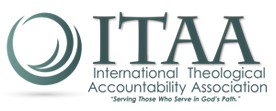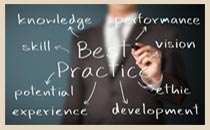Acknowledging that education is both science and art, there are many dimensions of excellence from which to begin discussions about best practices in the higher education classroom. There is a broad range of effective methods and conditions in the classroom that teachers can strive to create in order to facilitate effective learning. Classrooms vary in content and goals, and in vocational and academic areas of discipline. However, a core set of best practices can be drawn up with application to most post-secondary educational programs.
An established list of best practices in higher education classrooms helps those in education find agreement on the definition of what constitutes best practices in a constantly fluid and multifaceted industry. Consensus on best practices in the higher education classroom would go a long way in creating standards that best serve learners and reflect the foundational commitments of the college or university. Below are listed just a few of the areas in which best practices can be developed. Further information regarding the value of best practices in higher education classrooms can be found at www.joinitaa.com.
1. Lecture practices are the ways that new information is presented to audiences. The presenter must account for different learning styles within one group of learners and create ways to engage those who learn best by hearing, seeing, or doing, and so on.
2. Goals to grades associations set a rational linking of goals and desired outcomes. The issues every instructor must combat are how to evaluate the course content, determine the objectives, and effectively communicate the necessary performance expectations to the learners.
3. Learner self-responsibility must be fostered to allow students to plan and assess their own learning. Successful teachers provide ways for the learners to take some degree of active responsibility, for at least a portion of the course.
4. Active learning tactics facilitate constructive participation by students in their own learning. Research indicates clearly that people learn by doing. Thus, learning is a creative endeavor.
5. One thing an effective teacher does is to reward learner involvement. Teaching leads students into periods of risk and lack of skill. It is important to support learner participation with encouraging messages that reinforce the value of the risk they are taking.
6. Modeling: Educators teach by example, whether or not the lessons presented verbally and materially are congruent with the lessons taught by their personality and presentation. It is the genuine life that truly teaches.
7. A significant part of effective teaching is setting the stage. The students must feel comfortable enough to engage in learning. Meeting physical and psychological conditions greatly facilitate the learning process.
Regardless of the course content, best practices in post-secondary education are vital to effective learning. For additional information about best practices in higher education classrooms, please see .



